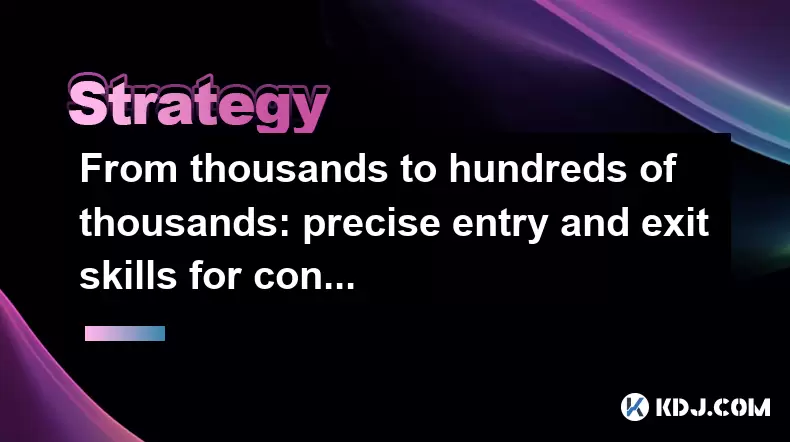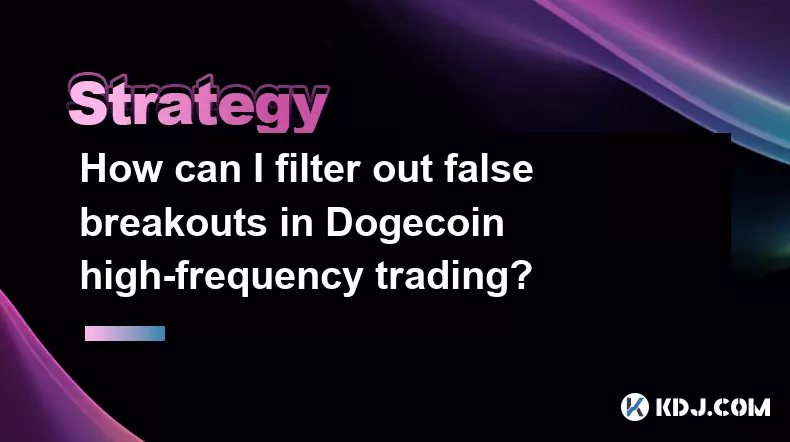-
 bitcoin
bitcoin $114779.865156 USD
2.30% -
 ethereum
ethereum $4226.519789 USD
2.39% -
 tether
tether $1.000545 USD
0.04% -
 xrp
xrp $2.890223 USD
0.92% -
 bnb
bnb $1030.029301 USD
2.95% -
 solana
solana $212.824944 USD
1.69% -
 usd-coin
usd-coin $0.999757 USD
0.01% -
 dogecoin
dogecoin $0.234961 USD
-0.27% -
 tron
tron $0.337174 USD
0.42% -
 cardano
cardano $0.804783 USD
0.09% -
 hyperliquid
hyperliquid $45.748770 USD
-2.85% -
 chainlink
chainlink $21.699170 USD
0.82% -
 ethena-usde
ethena-usde $1.001452 USD
0.08% -
 avalanche
avalanche $30.237800 USD
1.14% -
 stellar
stellar $0.372604 USD
1.52%
From thousands to hundreds of thousands: precise entry and exit skills for contract trading
Master contract trading with precise entry and exit skills: use technical analysis, set profit targets, and manage risk to turn small investments into big profits.
Jun 12, 2025 at 12:03 pm

Contract trading in the cryptocurrency market can be a lucrative endeavor, but it requires a deep understanding of market dynamics and precise entry and exit strategies. This article delves into the essential skills and techniques that traders need to master to transform small investments into substantial profits. Whether you're a novice or an experienced trader, these insights will help you navigate the volatile world of crypto contracts.
Understanding Contract Trading Fundamentals
Before diving into specific entry and exit strategies, it's crucial to grasp the basics of contract trading. Contract trading, also known as futures trading, involves buying or selling a cryptocurrency at a predetermined price at a future date. This allows traders to speculate on the price movements of cryptocurrencies without owning the underlying assets.
Leverage is a key feature of contract trading, enabling traders to amplify their potential returns. However, it also increases the risk of significant losses. Understanding how leverage works and setting appropriate leverage levels is essential for managing risk effectively.
Identifying Entry Points
Successful contract trading hinges on identifying optimal entry points. Technical analysis is a primary tool for determining when to enter a trade. Traders often use various indicators and chart patterns to predict future price movements.
- Moving Averages: These can help identify trends. When a short-term moving average crosses above a long-term moving average, it may signal a buying opportunity.
- Relative Strength Index (RSI): An RSI below 30 indicates an oversold condition, which might be a good entry point for a long position.
- Support and Resistance Levels: These are critical for spotting potential entry points. A price bouncing off a strong support level could be an ideal time to enter a trade.
Fundamental analysis also plays a role in entry decisions. News about regulatory changes, technological advancements, or significant partnerships can impact cryptocurrency prices. Staying informed about these developments can help traders make more informed entry decisions.
Mastering Exit Strategies
Knowing when to exit a trade is as important as knowing when to enter. Profit targets and stop-loss orders are essential tools for managing exits.
- Profit Targets: Setting a profit target helps traders lock in gains before the market reverses. For example, if a trader enters a long position at $10,000 and sets a profit target of 10%, they would exit the trade at $11,000.
- Stop-Loss Orders: These orders automatically close a position when the price reaches a certain level, limiting potential losses. A trader might set a stop-loss at $9,500 if they enter a long position at $10,000, ensuring they don't lose more than 5%.
Trailing stops are another useful exit strategy. A trailing stop moves with the price, locking in profits as the market moves in your favor. For instance, if a trader sets a trailing stop of 5% on a long position that rises from $10,000 to $12,000, the stop-loss would move from $9,500 to $11,400, securing more profit if the price drops.
Risk Management Techniques
Effective risk management is crucial for long-term success in contract trading. Position sizing is a fundamental aspect of this. Traders should never risk more than a small percentage of their trading capital on a single trade. A common rule of thumb is to risk no more than 1-2% of your total capital on any given trade.
Diversification across different cryptocurrencies and trading strategies can also mitigate risk. Instead of putting all your capital into one trade or one cryptocurrency, spread your investments to reduce the impact of any single loss.
Emotional discipline is another critical element of risk management. Fear and greed can lead to impulsive decisions, such as holding onto losing positions too long or exiting winning trades too early. Developing a trading plan and sticking to it can help maintain discipline.
Utilizing Advanced Trading Tools
To enhance their trading strategies, many traders use advanced tools and platforms. Trading bots can automate entry and exit decisions based on predefined criteria, reducing the emotional component of trading. These bots can be programmed to execute trades when specific technical indicators are met or when certain market conditions occur.
Algorithmic trading involves using computer algorithms to execute trades based on mathematical models. These algorithms can analyze vast amounts of data and execute trades much faster than a human trader could, potentially increasing profitability.
Backtesting is a technique used to evaluate the effectiveness of a trading strategy by applying it to historical data. This can help traders refine their entry and exit strategies before risking real money.
Case Studies and Real-World Examples
To illustrate the application of these skills, consider the following real-world examples:
- Bitcoin Futures Trading: A trader identifies a bullish trend in Bitcoin using moving averages and enters a long position at $30,000. They set a profit target of $33,000 and a stop-loss at $28,500. The price reaches $33,000, and the trader exits the position, securing a 10% profit.
- Ethereum Contract Trading: An Ethereum trader uses RSI to identify an oversold condition and enters a long position at $2,000. They set a trailing stop of 5% and ride the price up to $2,500, at which point the trailing stop is at $2,375. When the price drops to $2,375, the position is automatically closed, securing a 18.75% profit.
These examples demonstrate how precise entry and exit strategies, combined with effective risk management, can lead to significant gains in contract trading.
Frequently Asked Questions
Q: Can I use these strategies on any cryptocurrency exchange?A: While the principles of entry and exit strategies are universal, not all exchanges offer the same tools and features. It's important to choose an exchange that supports the specific indicators and order types you need for your trading strategy.
Q: How much time should I dedicate to monitoring my trades?A: The amount of time required depends on your trading strategy. Day traders may need to monitor their trades constantly, while swing traders might check their positions less frequently. Automated trading tools can help reduce the time needed for monitoring.
Q: What is the best leverage ratio for beginners?A: For beginners, it's advisable to start with lower leverage ratios, such as 2x or 5x, to minimize risk. As you gain experience and confidence, you can gradually increase your leverage.
Q: How can I improve my emotional discipline in trading?A: Improving emotional discipline involves developing a solid trading plan and sticking to it. Keeping a trading journal to review your decisions, practicing mindfulness, and avoiding trading when emotionally charged can also help maintain discipline.
Disclaimer:info@kdj.com
The information provided is not trading advice. kdj.com does not assume any responsibility for any investments made based on the information provided in this article. Cryptocurrencies are highly volatile and it is highly recommended that you invest with caution after thorough research!
If you believe that the content used on this website infringes your copyright, please contact us immediately (info@kdj.com) and we will delete it promptly.
- ChatGPT, Bitcoin, and $HYPER: Riding the Crypto Wave
- 2025-09-30 16:25:14
- Mutuum Finance (MUTM): Riding the DeFi Wave with Crypto Price Prediction
- 2025-09-30 16:25:14
- XRP ETF Approval Odds Soar: Analyst Predicts $33 Price Surge!
- 2025-09-30 16:30:01
- Keel, Solana, and Sky Stablecoin: Fueling the Future of DeFi
- 2025-09-30 16:45:13
- EcoChain, DePIN Infrastructure, and X1Nodes: Powering the Web4 Revolution
- 2025-09-30 16:30:01
- Pi Network's Institutional Momentum: Leading the Web3 Revolution
- 2025-09-30 16:45:13
Related knowledge

Practical parameter settings for a Bitcoin multi-timeframe moving average system
Sep 18,2025 at 10:54pm
Optimizing Timeframe Combinations for Bitcoin Trading1. Selecting appropriate timeframes is crucial when building a multi-timeframe moving average sys...

How can I filter out false breakouts in Dogecoin high-frequency trading?
Sep 22,2025 at 01:00am
Understanding False Breakouts in Dogecoin Trading1. A false breakout occurs when Dogecoin's price appears to move beyond a defined support or resistan...

Techniques for identifying tops and bottoms in the Bitcoin on-chain NVT model
Sep 20,2025 at 07:54pm
Understanding the NVT Model in Bitcoin Analysis1. The Network Value to Transactions (NVT) ratio is often described as the 'P/E ratio' of the cryptocur...

What does the surge in open interest in Bitcoincoin futures mean?
Sep 20,2025 at 11:18pm
Understanding the Surge in Dogecoin Futures Open Interest1. A surge in open interest within Dogecoin futures indicates a growing number of active cont...

How can I use the Ethereum USDT premium to gauge market sentiment?
Sep 18,2025 at 11:55pm
Understanding the Ethereum USDT Premium1. The Ethereum USDT premium refers to the price difference between USDT (Tether) traded on Ethereum-based plat...

What should I do if Ethereum staking yields decline?
Sep 20,2025 at 06:18am
Understanding the Causes Behind Declining Ethereum Staking Yields1. The Ethereum network transitioned to a proof-of-stake consensus mechanism with the...

Practical parameter settings for a Bitcoin multi-timeframe moving average system
Sep 18,2025 at 10:54pm
Optimizing Timeframe Combinations for Bitcoin Trading1. Selecting appropriate timeframes is crucial when building a multi-timeframe moving average sys...

How can I filter out false breakouts in Dogecoin high-frequency trading?
Sep 22,2025 at 01:00am
Understanding False Breakouts in Dogecoin Trading1. A false breakout occurs when Dogecoin's price appears to move beyond a defined support or resistan...

Techniques for identifying tops and bottoms in the Bitcoin on-chain NVT model
Sep 20,2025 at 07:54pm
Understanding the NVT Model in Bitcoin Analysis1. The Network Value to Transactions (NVT) ratio is often described as the 'P/E ratio' of the cryptocur...

What does the surge in open interest in Bitcoincoin futures mean?
Sep 20,2025 at 11:18pm
Understanding the Surge in Dogecoin Futures Open Interest1. A surge in open interest within Dogecoin futures indicates a growing number of active cont...

How can I use the Ethereum USDT premium to gauge market sentiment?
Sep 18,2025 at 11:55pm
Understanding the Ethereum USDT Premium1. The Ethereum USDT premium refers to the price difference between USDT (Tether) traded on Ethereum-based plat...

What should I do if Ethereum staking yields decline?
Sep 20,2025 at 06:18am
Understanding the Causes Behind Declining Ethereum Staking Yields1. The Ethereum network transitioned to a proof-of-stake consensus mechanism with the...
See all articles










































































